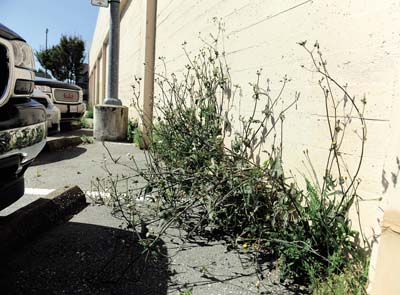The City of Hollister’s annual push is underway to have property
owners remove weeds before they become more of a fire hazard, with
322 parcels listed on the initial weed abatement list.
The City of Hollister’s annual push is underway to have property owners remove weeds before they become more of a fire hazard, with 322 parcels listed on the initial weed abatement list.
The City Council this week approved a resolution ordering the abatement of weeds on the properties, which include both privately- and publicly-held lots.
A public hearing was held to declare that certain properties in the city limits constitute a public nuisance because of an abundance of weeds and to allow property owners a chance to object to the order to remove them.
Property owners on the list were notified of the hearing by mail and told that if they didn’t remove the weeds themselves by May 13, the city would do the work and record the cost as a lien against the property. The city estimates that the abatement work would cost $10,000.
The weed abatement program is designed to “reduce the fire hazard and other noxious and dangerous aspects of weeds growing on public and private property,” according to a report by Fire Captain Michael O’Connor.
Properties on the weed abatement list are located throughout the city and are owned by individuals, development companies, family trusts and even the State of California.
An unusually wet rainy season has made weeds even more prevalent than normal, particularly on undeveloped lots. Parcels that made the list include the Hwy. 25 bypass, for which the San Benito County Council of Governments is listed as the owner/caretaker, and eight parcels at Hazel Hawkins Hospital on Sunset Drive.
San Benito High School District and homebuilders CreekBridge and KB Home also had properties on the list.
A majority of property owners take care of the weeds once they receive a courtesy notice form the city before the public hearing is held, though some wait until the city hires a private contractor to remove the overgrowth.
The city typically does its initial canvassing of overgrown properties in mid-winter, prior to sending letters to property owners in March.
The annual weed abatement list is designed as a proactive measure to reduce fire hazards even in areas that are undeveloped. Fire officials have noted that during a blaze, burning embers can migrate to other properties and structures.
The mitigation effort also makes overgrown parcels less attractive to people who might illegally dump tires, appliances or trash there, plus it clears sites that could become breeding grounds for rodent populations.










